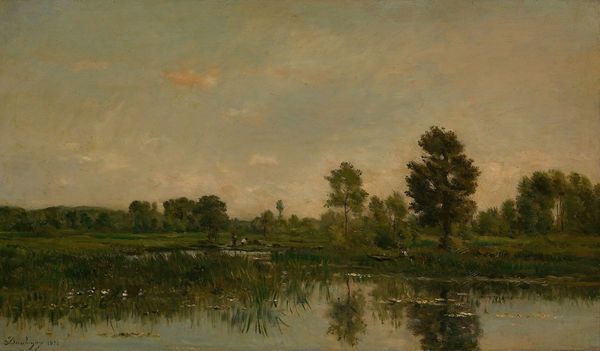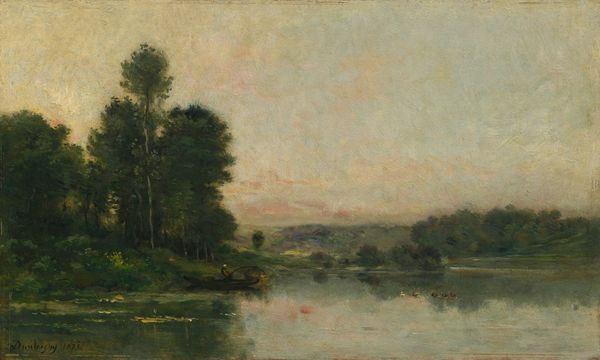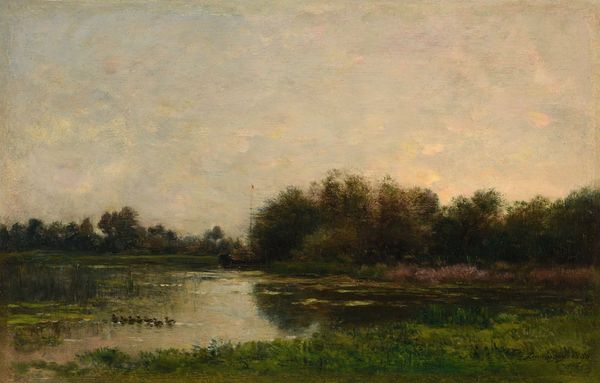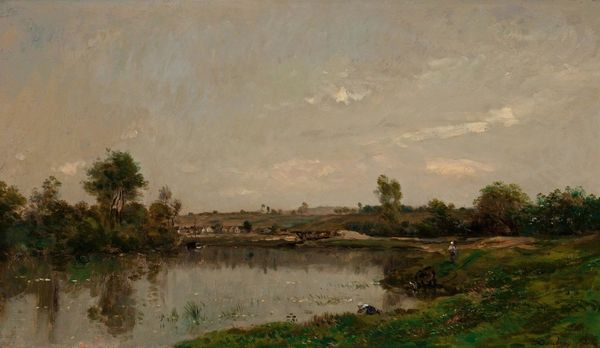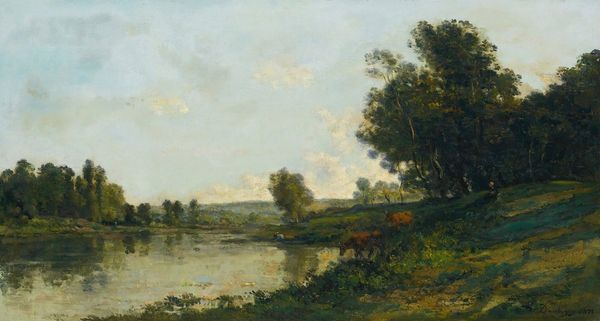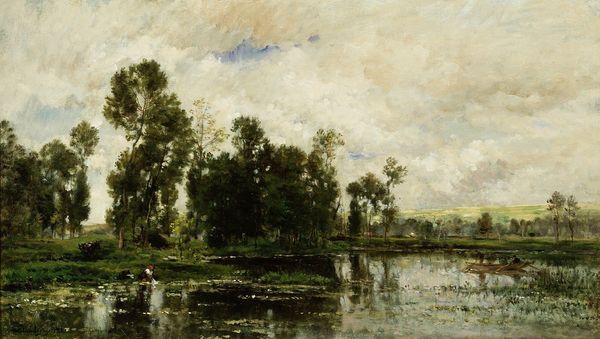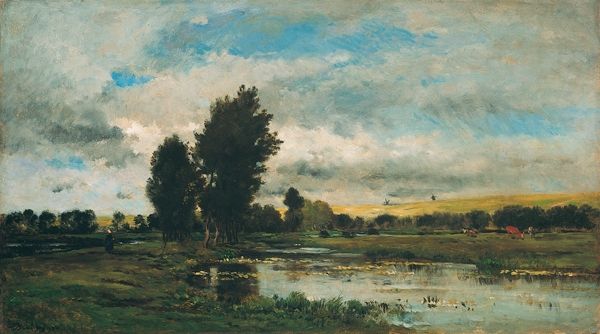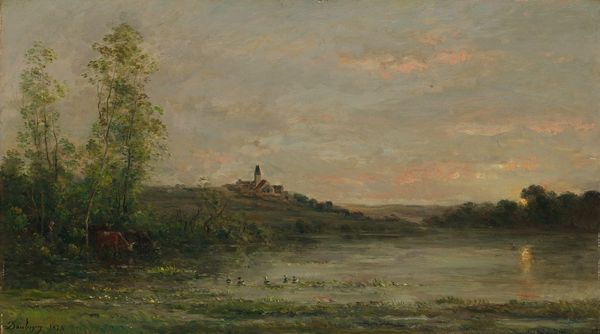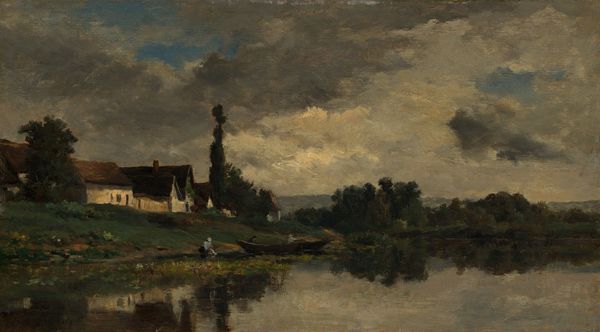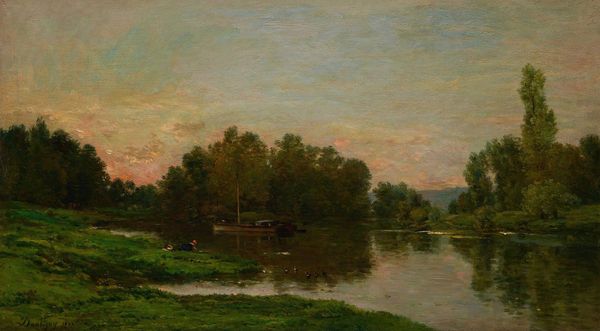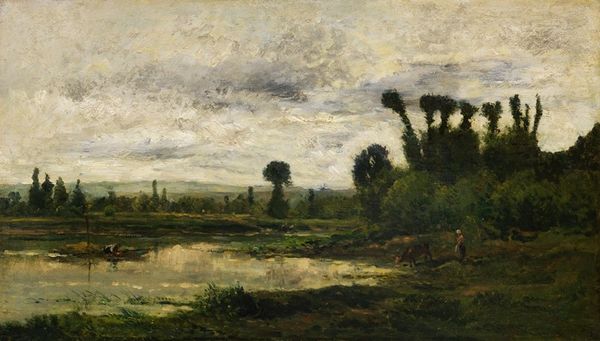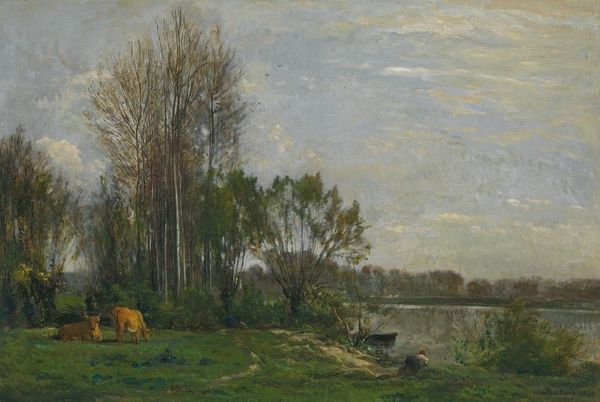
Copyright: Public Domain: Artvee
Charles-François Daubigny painted this image of the Banks of the Oise at Auvers with oil on canvas. Daubigny was part of the Barbizon school of painters in France, who rejected academic painting and sought to represent the landscape in a more naturalistic way. Made in the mid-19th century, the painting reflects a growing interest in rural life and the French countryside. But it also reflects the shifting social and economic conditions of the time. The rise of industrialization was leading many people to leave rural areas for cities, even as there was a desire to return to nature. The figures sitting by the bank remind us of labor and leisure. What kind of labor? Is it a holiday? This artwork is an important reminder of the social conditions that shape artistic production and the role of the historian in interpreting art. By researching the cultural, economic, and political forces that influenced Daubigny, we can gain a deeper understanding of the painting's meaning and significance.
Comments
No comments
Be the first to comment and join the conversation on the ultimate creative platform.
